The most recognisable feature of the constellation of Pegasus, the Flying Horse, is its ‘Great Square’, a landmark of the early winter night sky.
The Great Square of Pegasus is a large distorted ‘square’ asterism formed from stars Markab, Scheat and Algenib in Pegasus (Alpha (α)), Beta (β)) and Gamma (γ) Pegasi respectively) along with Alpheratz (Alpha (α) Andromedae).
Not all of the four stars of the Great Square are in the constellation of Pegasus, as you might have noticed.The top-left star, Alpheratz, is in the next-door constellation, Andromeda.
Other beautiful asterisms worth seeking out include Kemble's Cascade, the Coathanger asterism and the Teapot asterism.
How to find the Great Square of Pegasus
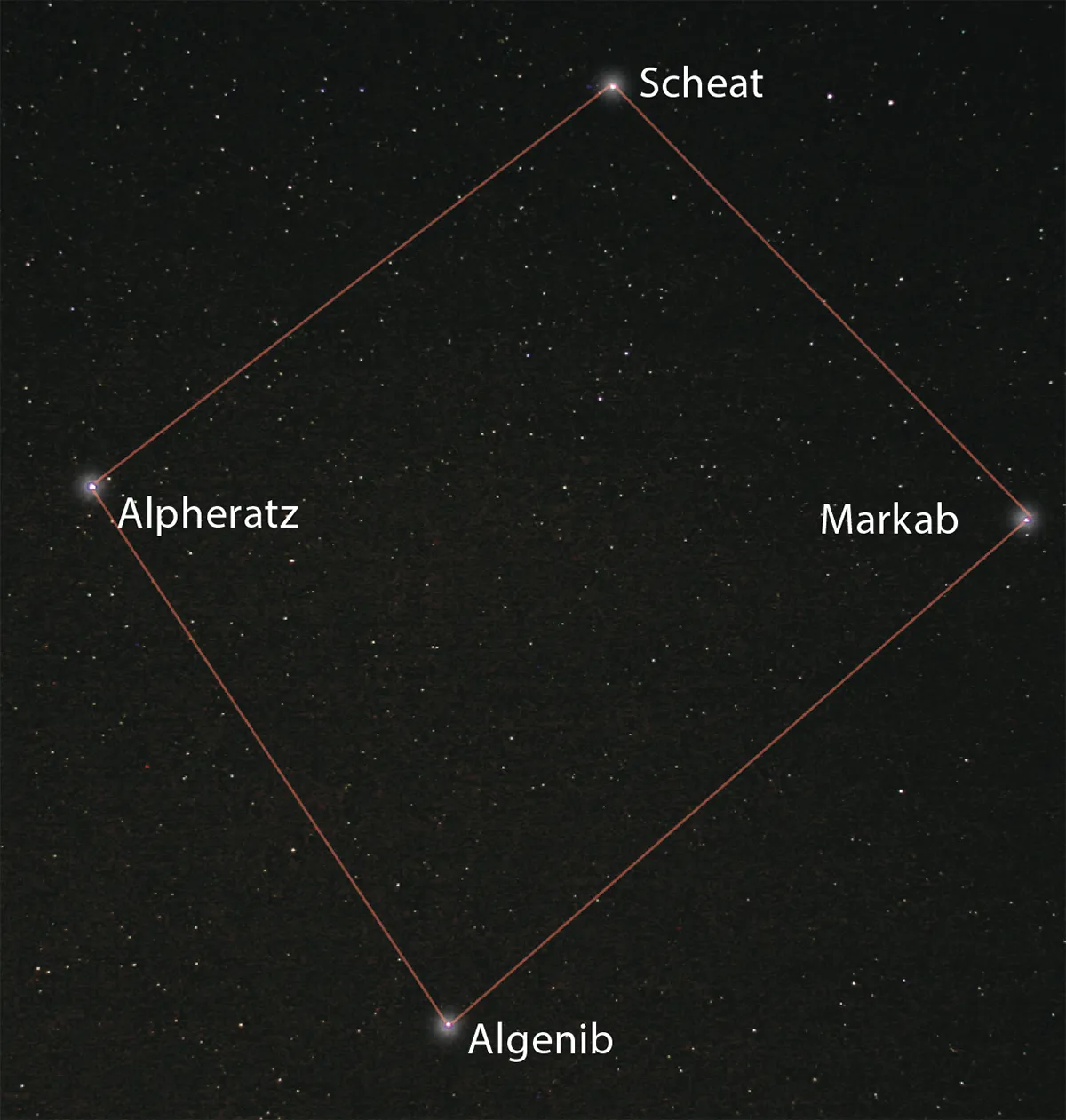
Finding large patterns of stars high in the sky such as the Great Square of Pegasus can be difficult. It can be tricky to know how big or small the star pattern is that you’re looking for.
This is where using your hand to gauge apparent size and distance in the sky comes in useful.
If you make a fist and then hold it out at arm’s length, you’ll find that your fist fits comfortably within the four stars of the Great Square.
We’ve already mentioned Alpheratz. The others are Scheat, Markab and Algenib, as shown in the image above.
Use our guide on how to find the North Star to locate Polaris. Then you should be able to spot the W-shaped asterism Cassiopeia (see below), which appears to rotate around the North Star over time.
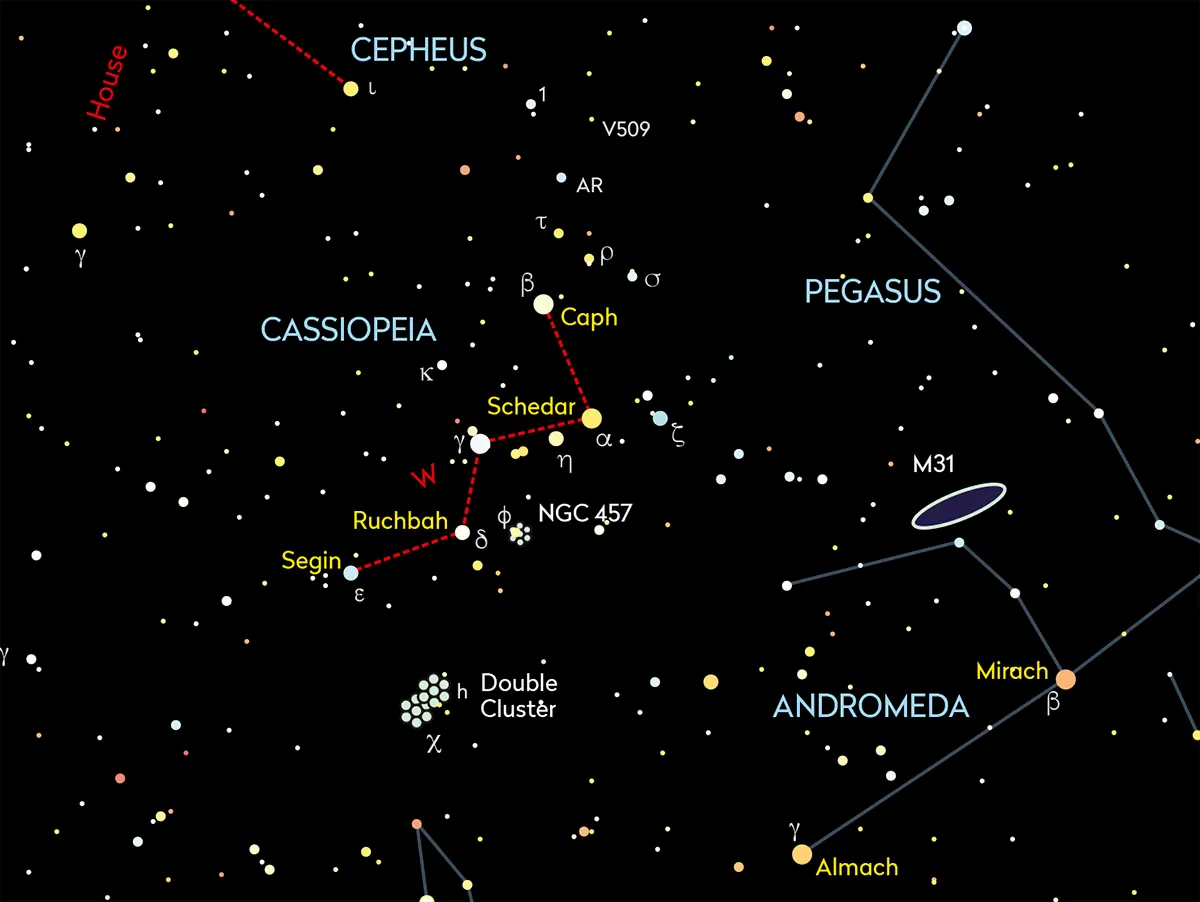
Once you've located Cassiopeia, you can use this as a jumping-off point to star-hop to the Andromeda constellation (see diagram below) and, eventually the Great Square of Pegasus.
See if you can find the Andromeda Galaxy too.
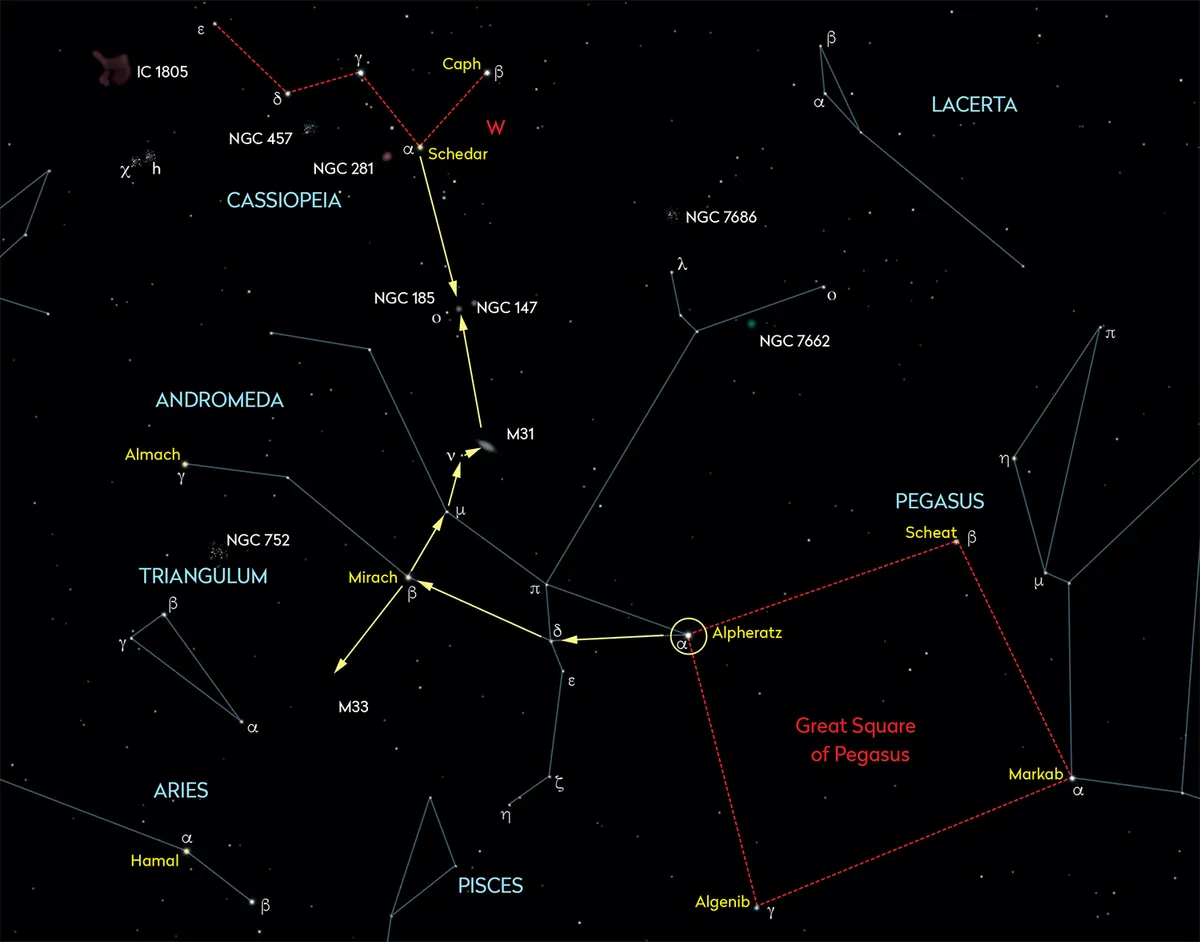
Once you’ve found the Great Square it can be used to star-hop to other star patterns like the Circlet with star 19 Piscium. You can also use it as an indicator of how light polluted your skies are.
See how many stars you can count inside the Square. The total can be used to gauge your sky transparency.
Not including the corners, a count of 0-2 is poor, 3-7 average, 8-11 good and 12 or more excellent. Conditions and totals may vary between nights.
If you can’t see any, then you may be suffering from quite a lot of light pollution and you should consider looking for a darker site to observe from. Perhaps try one of the many dark-sky stargazing sites in the UK.
6 deep-sky targets in the Great Square of Pegasus
So you've found the Great Square asterism. How about getting out your telescope and seeing whether you can spot some galaxies in and around the star pattern?
For help locating the objects listed below, download our PDF chart, which you can use under red light at your telescope.
1 - NGC 14

We’ll start with the faint but easy-to-locate irregular galaxy NGC 14. It has an apparent magnitude of +12.7, but is diffuse. At a distance of 47.1 million lightyears, it appears as little more than a faint smudge.
It’s located 1.25° northwest of Algenib and has an apparent size of 2.0 x 1.3 arcminutes, the elongated dimension orientated in a north-northeast/south-southwest direction.
2 - NGC 7814
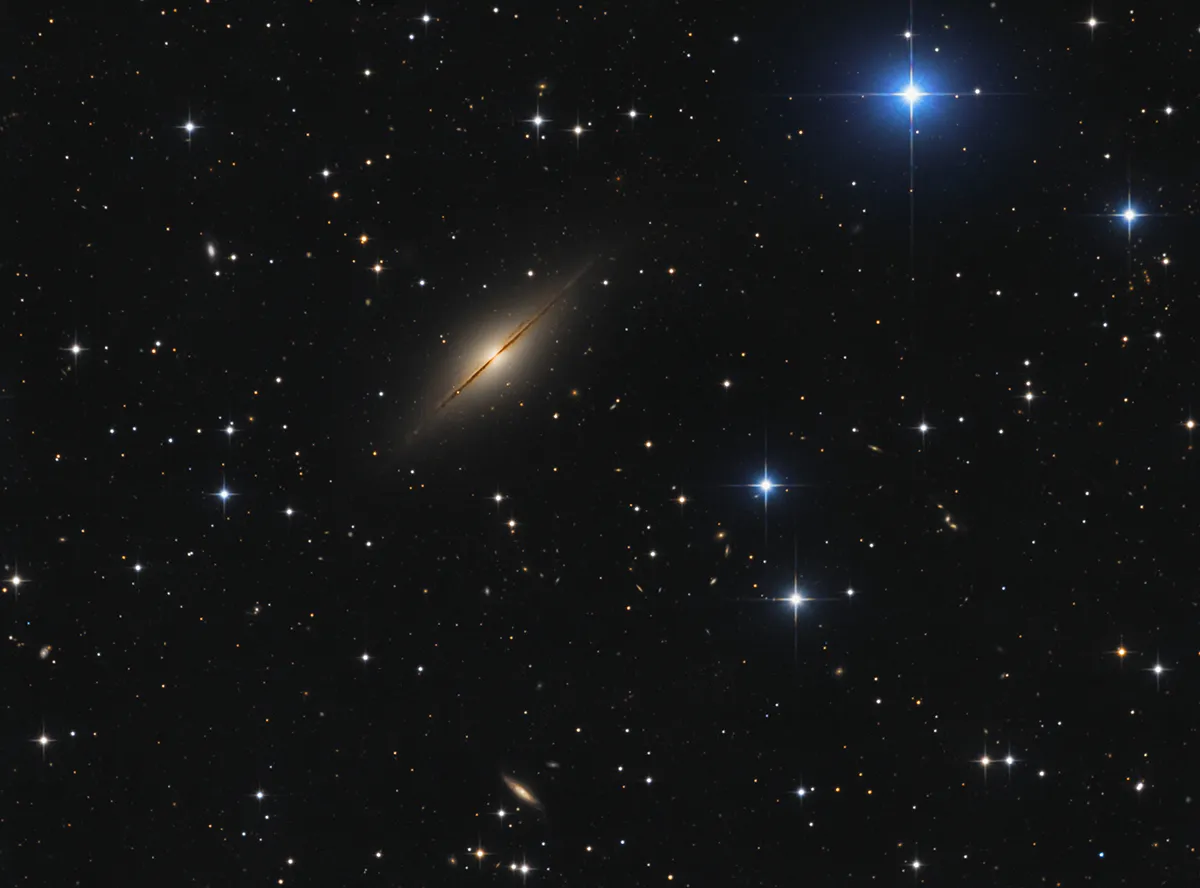
Our next target sits 1.4° west-northwest of NGC 14, or if you had trouble with that galaxy, 2.6° west-northwest of Algenib. It also sits 13 arcminutes southwest of mag. +7.2 star HIP 199. NGC 7814 is a nice spiral galaxy around 40 million lightyears away. Shining with an integrated magnitude of +11.6, it’s tilted to our line-of-sight to appear edge on to us: a thin light strip with a central bulge.
Smaller instruments show its elongation well, about 3 arcminutes in length oriented southeast-northwest with a 1 arcminute rough-textured core. The core appears condensed and a bit asymmetric. Long-exposure images through large scopes reveal a dust lane running the galaxy’s length.
3 - NGC 7769, NGC 7770 and NGC 7771

NGC 7769 is a relatively bright face-on spiral galaxy, located 1.1° north-northwest of mag. +5.0 Phi (ϕ) Pegasi. It has an integrated magnitude of +12.1 and appears about 1 arcminute across. A 250mm instrument reveals a small concentrated core with a faint, star-like nucleus.
Two additional galaxies occupy the field of view. The faintest by far is NGC 7770. Listed as 1.0 x 0.9 arcminutes across, you’ll need a big scope to see this mag. +14.5 object. Much easier is NGC 7771, which lies 5.4 arcminutes to the east-southeast of NGC 7769, with a brightness at mag. +12.3. ο SEEN IT
4 - NGC 7625

NGC 7625 is another spiral located within the Great Square’s boundary. This time the orientation presents us with an almost circular object, 1.6 x 1.4 arcminutes across. It shines at an integrated magnitude of +11.9 and is believed to be around 81 million lightyears away.
Locate it via the southern edge of the Great Square. Imagine the line from Markab to Algenib; from a point a quarter of the way along that line (starting at Markab), head north for about one-eighth the length of the line (about 2°) and you’ll be in the right area. A mag. +6.7 star sits 6.6 arcminutes east of the galaxy. A 250mm scope shows NGC 7625 as having a high surface brightness. ο SEEN IT
5 - NGC 7741
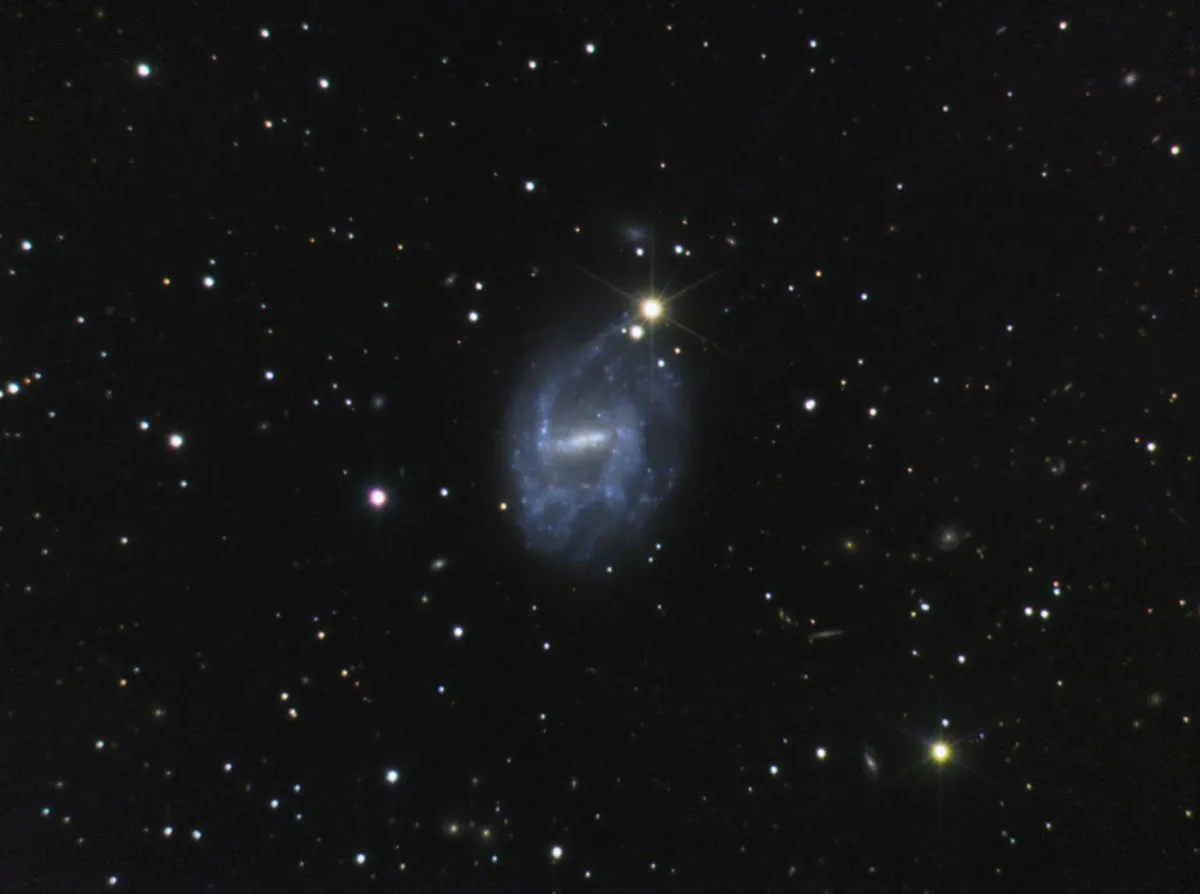
Next, we head north to find the barred spiral galaxy NGC 7741. The easiest locator is mag. +4.9, 78 Pegasi, itself located by looking two-fifths along the northern edge of the Great Square starting at Alpheratz. Once found, drop south from the star by 3.2° to locate NGC 7741.
The galaxy has an integrated magnitude of +11.4, but its apparent size is large, at the extreme measuring around 4.0 x 2.8 arcminutes, meaning its surface brightness is low. A 250mm scope shows a 3.0 x 2.0 arcminute object, the faint glow marginally increasing in brightness towards its core.
6 - NGC 1 & 2
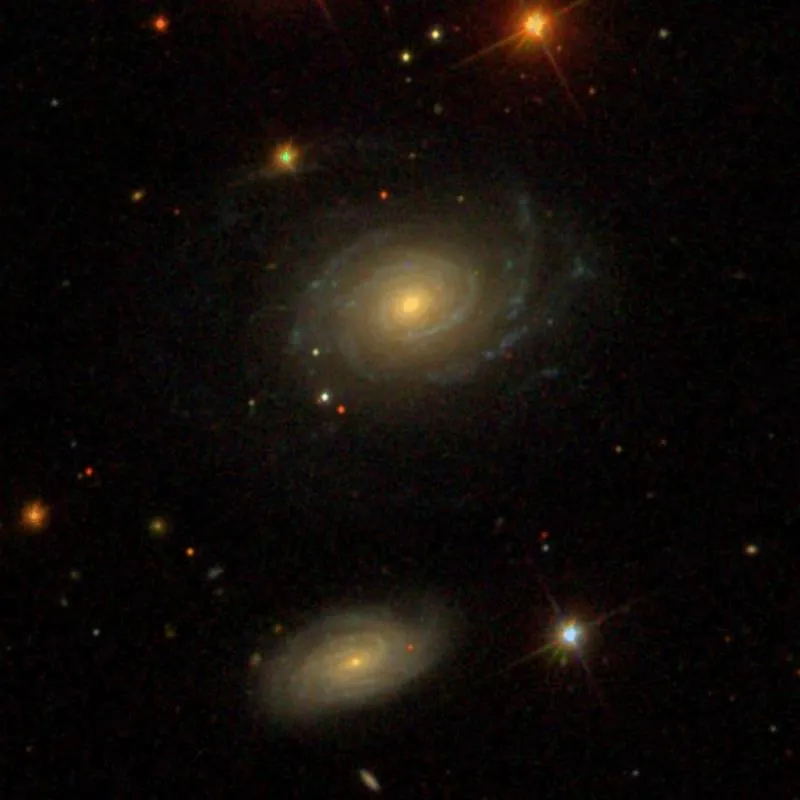
Our final targets mark the start of the NGC catalogue. NGC 1 and 2 are two spiral galaxies appearing close to one another in the northeast corner of the Great Square. NGC 1 is an intermediate spiral. It shines with an integrated magnitude around +13.0. Its surface brightness is low, approaching 14th magnitude, but it has a bright concentrated core. The apparent diameter of NGC 1 is around 45 arcseconds.
NGC 2 lies 1.8 arcminutes further to the south. This is hard to spot, its integrated brightness being around the mag. +14.5 mark.
This guide originally appeared in the September 2021 issue of BBC Sky at Night Magazine.
